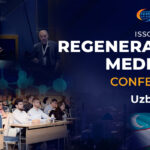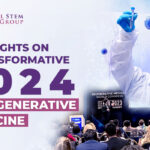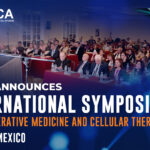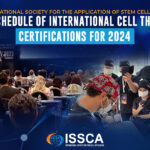What seemed an impossible medical challenge a few years ago might turn into a do-able task with the help of bone marrow stem cells. Several trials are testing the use of adult stem cells in heart disease, hoping to identify a viable solution for repairing the cardiac tissue damaged by heart attacks, coronary artery disease and other similar ailments.
<h1>Obtaining cardiac muscle cells in the lab</h1>
Despite the huge amount of information available out there and the numerous health programs that aim to prevent heart diseases, these conditions remain the most common cause of death in Europe, with heart attacks dominating the list. According to statistics, around 7 million people worldwide suffer from heart attacks each year, the damage being in lots of cases irreversible.
Given the amazing results obtained with stem cell therapies in conditions like leukemia or lymphoma, it was natural for scientists to intensify their research efforts in this niche, in order to see whether the potent stem cells can also be used for repairing damaged hearts. While some studies have showed promising results, others have found no improvement after transplanting stem cells to patients with heart conditions.
The biggest challenge in these cases seems to be the reprograming of stem cells obtained from other tissues into cardiomyocytes. Cardiomyocites are the cells that form the cardiac muscle, and although for a very long time scientists believed that the heart does not produce any stem cells, it’s been shown that the body does produce new cardiomyocytes each year, but the number decreases with age.
The discovery that the human heart produces new cells each year has created hope and encouraged researchers to try to find out where the new cardiac cells come from and how this process is controlled inside the body. The ultimate goal was to identify those mechanisms that could be replicated in lab conditions, so as to obtain new heart cells viable for transplantation in patients with heart diseases.
Although the existence of heart stem cells has not been confirmed yet, it is possible to obtain cardiomyocytes in the lab, from stem cells obtained either from embryos or from iPS cells (induced pluripotent stem cells). The latter can be obtained by reprogramming skin cells that are taken directly from the patient, reducing the risk of transplant rejection.
One of the biggest problems here comes from the fact that bone marrow cells and other adult stem cells can be reprogramed to repair a specific tissue, but if they are treated in lab conditions until they differentiate to specific cells like those in the cardiac tissue, the risk of tumors and rejection increases.
On the other hand, if the pluripotent stem cells from embryos or the iPS cells are transplanted into the heart, they might differentiate and give birth to a multitude of cells. It is impossible for one to control the type of cells formed by stem cells in the body once transplanted, if those cells were transplanted before specializing.
Stem cell studies on the damaged heart show mixed results
Existing studies show that treating heart conditions with stem cells is more difficult than using stem cells therapies for other tissues and organs. A trial done in Belgium, Switzerland and Serbia on 45 patients aimed to treat heart attack victims with stem cells. The injected cells led to no complications and were guided to become cardiac cells, scientists highlighting the safety and feasibility of the procedure [1].
Other studies showed little to no effect after the transplantation of stem cells. Cardiologist Darrel Francis at Imperial College London published a review study in BMJ, examining 133 reports of 49 randomized clinical trials that aimed to treat heart attack or heart failure patients with stem cells. According to his paper, more than 600 discrepancies were found in these trials, so the results cannot be considered relevant [2].
Francis’ study showed that the 5 trials that had no discrepancies reported no improvement in the left ventricular ejection fraction (LVEF) after stem cell treatment, while the 5 trials with the most numerous discrepancies reported a significant improvement (+7.7%) of LVEF after stem cell therapy.
While scientists are still trying to answer whether stem cells are a solution for damaged heart tissue, some stories report that patients who received this treatment after a heart attack saw a clear and dramatic improvement in their health state and heart function. One of these patients is Jim Dearing of Louisville, who was among the first patients to receive heart stem cells after suffering two heart attacks and heart failure. His heart was functioning normally one year post treatment [3].
What’s certain for now is that results of these studies are mixed, and researchers will need to further investigate the use of stem cells from bone marrow in patients with heart diseases.
References:
[1] https://beyondthedish.wordpress.com/2014/12/03/mayo-clinic-uses-reprogrammed-stem-cells-to-heal-the-heart/
[2] http://www.ncbi.nlm.nih.gov/pmc/articles/PMC4002982/
[3] http://www.webmd.com/heart/features/stem-cells-heart-failure-heart-disease







